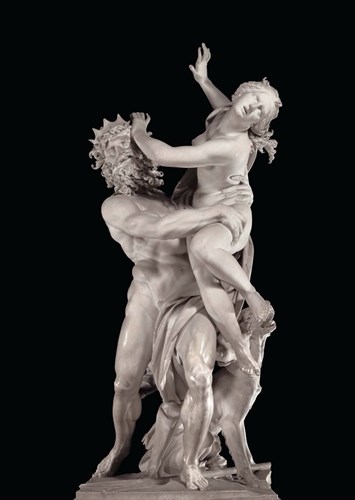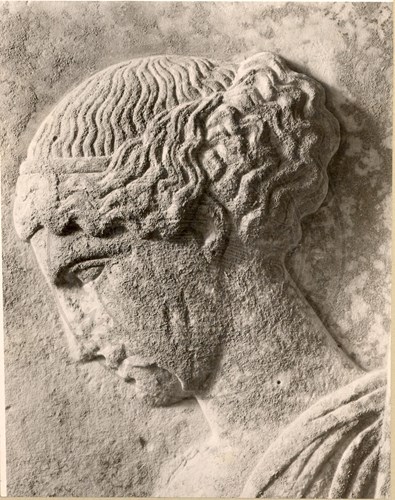Persephone, also known as Kore, was the daughter of Zeus and Demeter. She must have spent her youth as a carefree girl, but at some point, she caught the eye of Hades, the lord of the Underworld. With permission from her father, Hades abducted Persephone while playing with her companions in the Nysian Plain and carried her to his dark kingdom. Her rape and stay in the Underworld, as well as her mother’s desperate search for her, are told in great detail in the Homeric Hymn to Demeter. The wrath of Demeter and der determination not to allow the earth to offer any fruit while her daughter was missing forces Zeus and Hades to allow Persephone to return to her mother. But Hades gives her some pomegranate seeds that seal her fate.

The Rape of Proserpine, Gian Lorenzo Bernini, 1621-1622, sculpture, Galleria Borghese © Alvesgaspar / Wikipedia Commons
Having tasted the food of the Underworld, Persephone is forever doomed to return to the misty shadows for part of the year (a third or a half, depending on the source). During her stay alongside Hades, Persephone serves as the goddess of the Underworld. She was dreaded, and people were forbidden to speak her name. But the time came for her to return to the world of the living, at which point she became the goddess of Spring and nature. The Eleusinian Mysteries celebrated her annual return and transformed her into an everlasting symbol of immortality.
The story of Persephone is rampant with variations, ranging from her lineage to the site of her abduction and her activities in the Underworld. The canonical presentation of the myth in the Homeric Hymn to Demeter never stood in the way of poets, philosophers, and historians who reinterpreted the story as they deemed appropriate. The Sicilians claimed that Hades took Persephone in the fields near Enna. The Cretans argued in favour of their island as the site of these events. The Eleusinians identified the Nysian Plain of the hymn with a plain in Boeotia, while the Athenians placed the abduction in Attica.
Regarding the pomegranate story, the Hymn presents Hades giving the berry stealthily. Other versions show Persephone eating the berry almost willingly, but then Ascalaphus, the gardener of Hades, betrays her to the gods forcing her to return to the Underworld. Her lineage can be equally confusing. As goddess of death, she is the daughter of Zeus and Styx (a deity and a river that forms the boundary between Earth and the Underworld). Other traditions assert that Persephone married Zeus and had children with him.
The abduction and return of Persephone were an attempt by the ancient Greeks to explain the changing of the seasons. The sadness or joy of Demeter accounted for the death or rebirth of vegetation. Her sojourn in the Underworld represents grain's journey from storage to the fields as seed and its subsequent growth until harvest. Kore is the common name of Persephone as a vegetation goddess.

Head of Persephone from the Eleusinian relief of the National Archaeological Museum of Athens, photograph, Εν Αθήναις Αρχαιολογική Εταιρεία © Η εν Αθήναις Αρχαιολογική Εταιρεία






